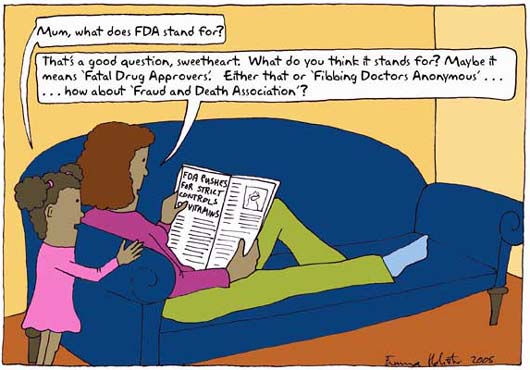saw this from
anarchy's acid house: Help Protect Poor Peoples Access to MedicinesSomthing to think about regarding pharmaceutical companies in developing countries..
Help Protect Poor Peoples Access to Medicines (click to email the CEO of Novartis)
India's important role as the pharmacy of the developing world is under attack. Multinational drug company Novartis is challenging India's patent law in court.15 February 2007 could be the final court hearing. If Novartis wins, millions of people living in poverty world wide could be deprived of affordable medicines. Your help is urgently needed.
Global drug company, Novartis, must stop denying India the right to produce cheaper medicines for poor people worldwide!
While proclaiming publicly that it "aspires to responsible and conscientious global citizenship based on trust, transparency and accountability" Novartis is taking the government of India to court to restrict its right to make life saving medicines affordable to poor people.
Novartis was recently denied a patent for a cancer drug (Glivec) but is refusing to accept the ruling and is now challenging India's Patent Law.
This could seriously impede poor people obtaining cheaper medicines and is against an international agreement that declares that developing countries can produce and import cheaper versions of medicines in the interests of public health.
Why should you care?
If Novartis wins its case, poor people in India will be denied cheaper cancer drugs.
India is the world's biggest producer of cheaper and therefore more affordable medicines. If Novartis is successful, it will jeopardise India's ability to provide a wide range of drugs, including HIV medicines, to millions of poor patients in developing countries.
香港oxfam (中文名稱 樂施會):
諾華藥廠挑戰印度專利法,威脅數百萬人治病權 樂施會呼籲瑞士諾華製藥公司(Novartis)立即終止向印度政府提出的訴訟,確保印度數以百萬計的低收入病人,不會因為專利法的限制而無法獲取較廉價的非品牌配方藥品。
印度晨奈法院於今天(1月29日)就諾華挑戰印度專利法的訟訴展開聆訊。
事緣是印度政府早前拒絕了諾華出品的一種治療白血病藥品Glivec的專利註冊申請;諾華不服,一方面向印度專利註冊當局提出上訴,另一方面向法院挑戰印度政府的專利法「不合理」。
專利法的原意旨在為嶄新的發明提供知識產權保障。諾華早於1993-94年在歐美國家為Glivec註冊專利,其後諾華在該藥品中加入一種成份,然後以新配方重新推出,並試圖在各地,包括印度申請專利。根據印度專利法,任何將配方作輕微更改的藥品,不算是新發明,因此Glivec不得再註冊為專利藥。
樂施會貿易要公平主管Celine Charveriat 指出,「雖然諾華爭取的只是單一種藥品的知識產權保障,但其實際影響深遠,可能削弱印度生產非品牌配方藥以保障公眾健康的主權。」
「世界藥業的市場近年正經歷變化, 不少暢銷品牌藥的專利權開始陸續屆滿,而新發明的藥物又相當有限,不少大藥廠為求維持市場壟斷地位及爭取最多利潤,不惜以『舊瓶新酒』的方式,爭取將藥品的專利權延長。」由於Glivec在印度未獲專利,印度藥廠一直以來都可以合法以生產仿製的Glivec藥品。
印度病人服用非品牌配方藥的藥費每年約為2000美元,少於品牌藥費(每年27000美元)的十分之一。 印度亦是世界上最大的非品牌配方藥生產國及出口國,目前發展中國家愛滋病人採用的藥品有半數來自印度。若諾華今次成功在印度獲得Glivec的專利權,其他發展中國家人民獲取廉價藥物的權利將大大受到威脅。
雖然諾華聲稱有向貧苦病人提供免費的Glivec藥,但樂施會認為這並非可持續的做法,單在印度每年就有24000個新的白血病例,惟有容許當地藥廠複製品牌配方藥,引入競爭,才可持續地將藥價維持在人人可負擔的水平,以打破跨國品牌藥廠壟斷和抬價的局面。
印度加入世貿後,最遲須2016年在國內立法落實《與貿 易有關知識產權協定》的規定。印度在2005年起推出專利法,並執行專利註冊制度。若諾華在印度獲得Glivac的專利註冊,有關專利權的期效將至 2017年。現時,印度專利註冊當局已接獲9000宗專利申請,其中7000宗相信是「舊瓶新酒」的藥品。
http://www.maketradefair.com/
 the
the 